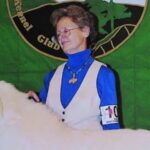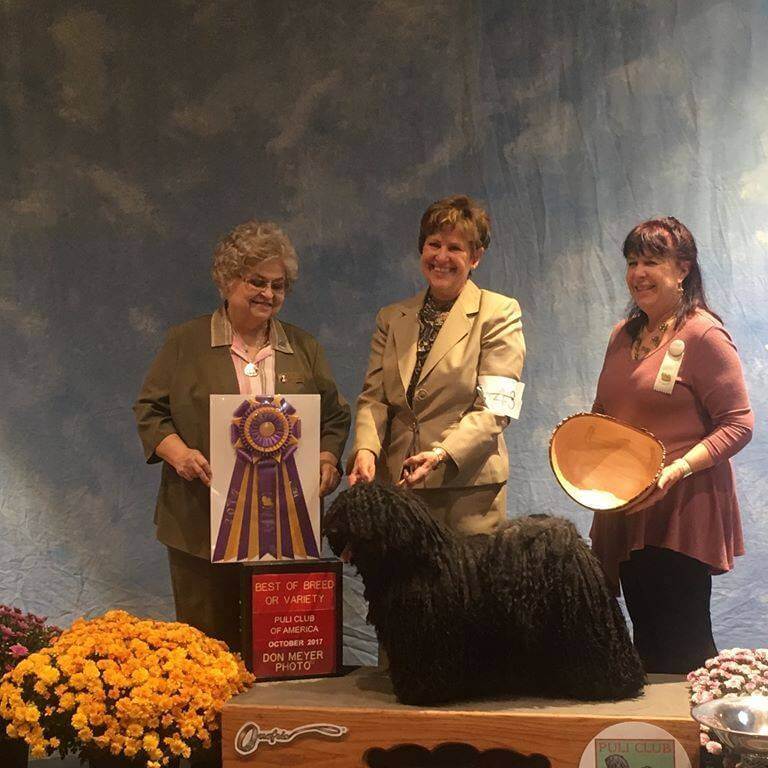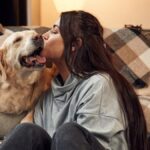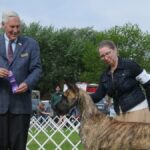Interview with Herding Group Judge Barbara Pessina
Where do I live? How many years in dogs? How many years as a judge?
Barbara Pessina: I live in New York. I feel like I have been “in dogs” my whole life, having purchased my first purebred dog (a German Shepherd) when I was 19, and took her to obedience classes. I purchased my first show quality Puli in 1976. I have been a judge for 24 years.
What is my original breed? What is/was my kennel name?
Barbara Pessina: My original breed is Puli and my kennel name is Moonshadow.
Can I list a few of the notable dogs I’ve bred? Any performance or parent club titles?
Barbara Pessina: I’ve been fortunate to have had many notable dogs through the years, but the real test of quality is not in the number of dog shows you win or the number of ribbons you bring home. The proof is in the whelping box and the contribution to the breed you leave behind. The dogs that first come to mind would be Ch. Moonshadow Kis Kerengo—my first homebred who also was BOS at Puli Nationals two times and the dam of two BIS dogs (Ch. Moonshadow Puttin On The Ritz, my first multiple Best in Dhow dog, and Ch. Moonshadow Villago Csatalo, also a National Specialty winner). Two others who come to mind are Ch. Moonshadow Arctic Express, the first multiple Group-winning white Puli in the US, and his son, Ch. Moonshadow Mind Over Matter, “Sprout.” Sprout was bred sparingly, but produced 23 champions and is the #4 all-time top producer in the breed with many outstanding offspring. A National Specialty winner himself, he factors heavily in the pedigrees of multiple dogs that have been WD, WB & BOS at numerous National Specialties, and has made his foreign influence on dogs in Denmark, England, and Australia. His children and grandchildren continue to impact the breed.
What are the qualities I most admire in the Herding breeds?
Barbara Pessina: Intelligence, devotion to family, and work ethic are the most prized traits of a Herding Dog. I often feel they can look into your eyes and see your heart. They feel what you feel, and their love is unconditional. I often tell people new to the Herding breeds that most of these dogs don’t have a flock anymore, so we, “their people,” become their flock. They use that same work ethic that has been bred into them for generations on us, and they become our guardians.
Have I judged any Herding Group Specialties?
Barbara Pessina: I have judged the Puli National four times—in 2000, 2008, 2014 & 2019—as well as the Puli Championship show in Great Britain in 2006.
Do I find that size, proportion, and substance are correct in most Herding breeds?
Barbara Pessina: I find that size, proportion, and substance are generally correct in most Herding breeds. There is always the occasional dog that is incorrect, but that is across all breeds and not just a Herding Dog.
Is breed-specific presentation important to me as a judge? Can I offer some examples?
Barbara Pessina: Breed-specific presentation is very important to me because each of the Herding breeds had a very specific, intended purpose and herding style. Each breed standard has emphasis on some characteristics that are hallmarks of the breed. In Beardies, a bright, inquiring expression is a distinctive feature. In Collies and Shelties, head proportion is of great importance. I would hate to see all Herding breeds shown as generic show dogs. It is important to maintain the unique characteristics and qualities that maintain their ability as a Herding Dog.
What about breed-specific movement? Do I demand this from Herding Dogs?
Barbara Pessina: Correct movement is essential to the job these Herding Dogs were intended to do. A Herding Dog must have agility and endurance, and correct, breed-specific movement has much to do with their proper proportion. A breed that is square or square appearing, such as the Pumi or Puli, will not move in the same manner as a breed that is required to be longer than tall, such as the German Shepherd. The Puli or Pumi would be used primarily to gather sheep. The German Shepherd would be used as a “liquid fence.” Add to this the Border Collie with its distinctive head and neck carriage, and “eye.” All are Herding Dogs, but with very different herding styles and purposes. I do not like dogs raced around the ring as if the “hounds of hell” are on their tails or scrambling as if they were raised on the side of a mountain.
Are the Herding breeds in good shape overall? Any concerns?
Barbara Pessina: Overall, I think most Herding breeds are in relatively good shape. I’m sometimes surprised at the depth of quality in some of the more popular breeds, and just as pleased to see strength in some of the newer, low-entry breeds. My one concern would be the “need for speed” and the tendency toward generic show dog movement.
In my opinion, how do today’s exhibits compare with the Herding Dogs of the past?
Barbara Pessina: I don’t think you can compare the dogs of today with Herding Dogs of the past. Many breeds have improved, while others have not. I think breeds tend to cycle, and in some years you have tremendous strength and quality—and then you hit a low spot where the depth is just not there. It happens in every breed.
Why do I think Herding Dogs can often become outstanding Show Dogs?
Barbara Pessina: Herding Dogs need a job to do. It’s in the very fiber of their being. It’s what they live and breathe for. They give every ounce of their attention and drive to their handler for those few minutes in the ring.
Just for laughs, do I have a funny story that I can share about my experiences judging the Herding Group?
Barbara Pessina: No funny stories to tell… LOL.









